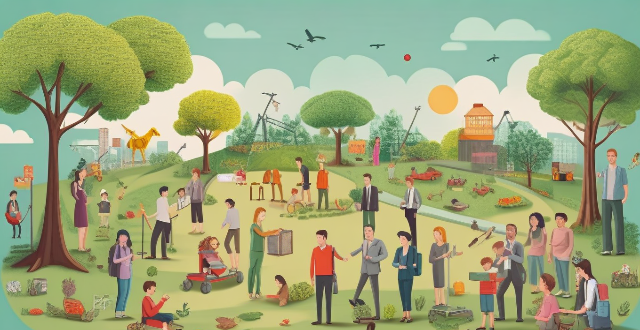Climate change affects everyone unevenly, with vulnerable populations often facing greater risks. To ensure inclusivity in climate adaptation and mitigation, efforts should include conducting needs assessments, integrating rights-based approaches into policies, providing resources and support, building resilience through education and capacity building, promoting equitable infrastructure development, addressing health impacts, fostering inclusive economic opportunities, and ensuring legal protections. By prioritizing these actions, we can move towards a more resilient and equitable world for all.

Ensuring Inclusivity in Climate Change Adaptation and Mitigation Efforts
Climate change is a global issue that affects everyone, but its impacts are not evenly distributed. Vulnerable populations, such as low-income communities, indigenous peoples, children, the elderly, and individuals with disabilities, often face greater risks and have fewer resources to cope with the consequences of climate change. Therefore, it is crucial that efforts to adapt to and mitigate climate change are inclusive of these vulnerable groups. Here's how we can ensure this happens:
1. Identify and Engage Vulnerable Populations
- Conduct Needs Assessments: Carry out thorough assessments to identify which populations are most vulnerable and understand their specific needs related to climate change.
- Establish Partnerships: Work with community organizations, NGOs, and other stakeholders who have connections with vulnerable groups to ensure they are represented in decision-making processes.
2. Integrate Inclusivity into Policies and Planning
- Rights-Based Approaches: Ensure policies recognize the rights of all individuals, including the most vulnerable, to a safe and healthy environment.
- Participatory Planning: Involve vulnerable populations in the development of adaptation and mitigation strategies to ensure their voices and needs are considered.
3. Provide Resources and Support
- Access to Information: Ensure that information about climate change and available adaptation measures is accessible in formats that are understandable to all segments of society.
- Financial and Technical Assistance: Allocate funds specifically for projects that benefit vulnerable populations and offer technical support to help them implement adaptation measures.
4. Build Resilience through Education and Capacity Building
- Educational Programs: Develop educational programs that focus on climate literacy and teach skills for adapting to climate change impacts.
- Capacity Building: Enhance the ability of vulnerable groups to participate effectively in climate action through training and empowerment initiatives.
5. Promote Equitable Infrastructure Development
- Inclusive Design: Ensure that infrastructure projects like housing, transportation, and utilities are designed to be accessible and beneficial to all individuals, regardless of their economic or physical conditions.
- Disaster Risk Reduction: Integrate disaster risk reduction measures into infrastructure planning to protect vulnerable populations from extreme weather events.
6. Address Health Impacts
- Health Services Accessibility: Improve access to health services, especially in areas where climate change may exacerbate health issues faced by vulnerable populations.
- Public Health Interventions: Implement public health interventions tailored to the specific needs of vulnerable groups to reduce climate-related health risks.
7. Foster Inclusive Economic Opportunities
- Green Jobs: Create green job opportunities that are accessible to vulnerable populations, allowing them to participate in and benefit from the transition to a low-carbon economy.
- Livelihood Diversification: Support diversification of livelihoods among vulnerable groups to reduce their reliance on climate-sensitive sectors like agriculture.
8. Ensure Legal Protections
- Legislative Measures: Pass legislation that safeguards the rights of vulnerable populations in the context of climate change, including protections against displacement and discrimination.
- Justice Mechanisms: Establish effective justice mechanisms where vulnerable populations can seek redress for climate-related grievances.
By prioritizing these actions, we can move towards a future where climate change adaptation and mitigation efforts not only protect our environment but also ensure that no one is left behind. It's imperative that we listen to the voices of those most affected by climate change and work together to build a more resilient and equitable world for all.